In today’s world, we rely heavily on laptops for work, gaming, and entertainment. Whether you’re working, studying, or watching shows at home, a good setup helps. One of the best ways to improve your experience is to use an external monitor for your laptop. It’s easy and effective. This simple addition can bring numerous benefits, from boosting productivity to improving comfort. This article will explore the top benefits of using an external monitor for your laptop. It can transform your everyday tasks.
Best External Monitor for Laptops
To find the best external monitor for laptops, consider its size, resolution, refresh rate, and connection types (like HDMI, USB-C, or DisplayPort). Top 2024 picks include the Dell Ultrasharp, LG UltraFine, and ASUS ProArt monitors. They have great picture quality and color accuracy. They also boost productivity. A 4K monitor shows sharper images. So, it’s easier to edit photos and videos. These monitors are also good for multitasking. They have more screen space than a laptop’s display.

How to Connect an External Monitor to a Laptop
Connecting an external monitor to a laptop is generally straightforward. Here’s a step-by-step guide:
Check your ports: Laptops typically have HDMI, USB-C, DisplayPort, or VGA ports.
Use the correct cable: Once you know the type of port your laptop and monitor have, use the right cable. For example, HDMI is common, and most modern laptops and monitors support it.
Adjust settings: After plugging in the monitor, your laptop will detect it. Right-click on your desktop. Then, choose “Display Settings” to adjust the displays.” You can choose to extend the display or mirror it, depending on your needs. This process lets you use a larger, secondary screen. It helps with comfy viewing, multitasking, and gaming.
Dual Monitor Setup for Laptop
A dual monitor setup for laptops allows you to connect two external screens to your laptop. This setup is especially helpful for people who need more screen space for work. This includes programmers, video editors, and gamers. You can either extend your display to both monitors or have one screen mirror the other. To set this up, you may need a docking station or an HDMI splitter if your laptop only has one video output port. Many modern laptops, especially gaming ones and work-from-home setups, have multiple ports. This allows for a dual monitor setup. This helps you view more content simultaneously, enhancing productivity.
Portable Monitors for Laptops
Portable monitors for laptops are lightweight, easy-to-carry screens. They are perfect for people on the go. They connect to your laptop via USB-C or HDMI. They provide a second display for work, gaming, or presentations. Portable monitors like the ASUS ZenScreen and AOC Portable Monitor are popular. They are thin, lightweight, and fit easily in a laptop bag. A portable monitor is a great way to expand your workspace. It’s perfect for work trips or just moving between rooms.
Laptop Docking Station with Monitor
A laptop docking station with a monitor connects multiple devices to your laptop via one connection. These peripherals include keyboards, mice, external storage, and monitors. Docking stations are great for making a workstation at home or the office. You can quickly switch from mobile work to a desktop setup with an external monitor, keyboard, and accessories. Brands like Dell and HP offer docking stations that simplify the process of connecting multiple devices at once.
External Monitor for Gaming Laptops
Using an external monitor for gaming laptops can greatly improve your gaming experience. Gaming laptops often have high-end graphics cards. But, their small screens can be limiting. A high-refresh-rate monitor (144Hz or 240Hz) will improve your gaming. It will give you smoother gameplay and better visuals. Gamers prefer monitors like the ASUS ROG Swift and Acer Predator. They offer high-quality displays and fast response times.
USB-C Monitor for Laptop
A USB-C monitor for a laptop connects via a USB-C port. It’s a newer, versatile connection found on most modern laptops. USB-C can transfer video, data, and power through a single cable, making it incredibly convenient. Monitors like the LG UltraFine 4K and Dell P2720DC are USB-C models. They provide excellent visuals and can charge your laptop while connected. This is especially useful for professionals who need a clutter-free desk setup.

Laptop Monitor Compatibility
When buying an external monitor, it’s essential to ensure laptop monitor compatibility. It means checking if your laptop has the right ports (HDMI, USB-C, DisplayPort, etc.) to connect to the monitor. Also, ensure your laptop’s graphics card can support the monitor’s resolution and refresh rate. Compatibility ensures that the monitor works smoothly without any lag or issues.
External Monitor for MacBook
MacBooks, especially the newer models, have USB-C ports. An external monitor for a MacBook should support USB-C. The LG UltraFine 5K and BenQ PD3220U are great options. They have high resolutions and excellent color accuracy. This is perfect for creative pros like designers and photographers. These monitors also allow you to connect and charge your MacBook simultaneously.
Multi-Screen Setup for Laptops
A multi-screen setup for laptops connects multiple monitors to your laptop. This expands your workspace. This is especially useful for tasks that need a lot of screen space. Examples include video editing, programming, and stock trading. A multi-screen setup can also benefit gamers. It offers a more immersive experience with wider viewing angles. To achieve this, you may need a docking station or a laptop with multiple video output ports.
Best Budget External Monitor for Laptops
For those on a tight budget, many low-cost laptop monitors are good. They offer great performance. Affordable monitors, like the Acer SB220Q and ViewSonic VX2457, have good picture quality and decent refresh rates. They won’t break the bank. Budget monitors are perfect for students or anyone who needs an extra screen but doesn’t want to spend too much.
Portable External Screen for Laptop
A portable external screen for a laptop is a great solution for people who travel frequently. These screens are lightweight and portable. They’re often powered by the laptop via a USB-C connection. The Lepow Portable Monitor and ASUS ZenScreen are popular. They have good picture quality in a compact size. This makes it easy to set up a dual-screen workspace wherever you are.
Laptop to External Monitor HDMI Connection
Most laptops support connecting to an external monitor through an HDMI connection. HDMI is a popular connection type. It transfers both video and audio. So, it’s often used to connect external displays. Plug one end of the HDMI cable into your laptop. Plug the other end into the monitor. Your laptop will detect the external display.
External Monitor for Work from Home
An external monitor is essential for work-from-home setups. It boosts productivity. Many remote workers prefer a larger screen. It helps them manage tasks, attend video meetings, and review documents. The HP EliteDisplay and Dell P Series monitors are great for home offices. They have adjustable stands, eye care tech, and larger screens. These features make long hours of work more comfortable.

Ultrawide External Monitor for Laptop
An ultrawide external monitor is best for laptop users. It gives extra screen space without needing multiple monitors. These monitors are much wider than standard ones. They give a panoramic view, which is useful for video editing, programming, and gaming. Ultrawide monitors, like the LG 34WN80C and Samsung CJ791, suit gamers and multitaskers. They provide a seamless, immersive experience.
4K External Monitor for Laptop
A 4K external monitor for a laptop has four times the resolution of a standard 1080p display. This gives sharper images and more vibrant colors. These monitors are perfect for video editors, graphic designers, or 4K content fans. Popular options are the BenQ PD3200U and the Dell Ultrasharp U2720Q. Both have excellent color accuracy and high resolutions. They are great for professional use and gaming.
Wireless External Monitor for Laptop
A wireless external monitor for laptops connects without any cables. This can be incredibly convenient in settings where a clutter-free workspace is desired. You can wirelessly stream your laptop’s display to a compatible monitor or TV. Use Miracast or WiDi to do it. This setup is perfect for presentations. It lets users move their laptops without disconnecting the monitor.
Best External Monitor for Productivity
To boost productivity, the best external monitors have three things. They should be high resolution, ergonomically good, and have multiple connectivity options. The Dell U2721DE and HP Z27 are designed for professional work. They have adjustable stands, eye-care tech, and USB-C connections to reduce desk clutter. These monitors boost efficiency. They provide more space for multitasking and reduce eye strain.

External Monitor Resolution for Laptops
The resolution of an external monitor refers to how many pixels it displays. Higher resolutions, like 4K or 1440p, are better than 1080p. They have sharper images and more screen space. The right resolution depends on your laptop’s graphics and your use of the monitor. A 1080p monitor is enough for general work and browsing. But, for video editing or gaming, 1440p or 4K are better. They offer more clarity and detail.
Larger Screen for Multitasking
A key advantage of adding an external monitor to a laptop is the larger screen. Laptops are portable, but their small screens can be a pain. This is especially true when multitasking. Connect your laptop to a bigger external monitor. You can then open multiple windows side by side. This setup is perfect for dual monitor laptop use. You can have one window for research and another for writing.
For gamers, an external monitor for gaming laptops boosts the experience. It offers a larger view and a higher resolution. Stats show that gaming laptop users prefer external monitors. They want a bigger screen and better performance. This helps them win in fast-paced games.
Improved Ergonomics and Comfort
Spending long hours hunched over a small laptop screen can lead to neck and back pain. Using an external display for laptops? Adjust the monitor to eye level. This improves your posture and reduces strain on your neck and back. This helps maintain a comfortable working position. It is vital for those who work from home.
Using an external monitor for remote work has become popular. People want to make their home offices more ergonomic. A properly positioned monitor can prevent discomfort. It lets you work longer without physical strain.

Better Productivity with a Multi-Screen Setup
A multi-screen setup for laptops can be a game-changer for power users or multitaskers. With two or more monitors, you can spread your work across multiple screens. This makes it easier to track different tasks. For instance, one screen can show emails. A second can run video calls. A third can be for editing or browsing.
Dual monitor setups for laptops are becoming more common in offices and home offices. They boost productivity. Research shows that more screen space can boost productivity by 42%. Users can get more done in less time. A portable laptop monitor can increase flexibility. It lets you create a multi-screen setup, even in small spaces.
Enhanced Gaming and Entertainment Experience
For gamers, a better, bigger monitor can greatly improve the experience. An external monitor for gaming laptops offers a better experience. You get higher refresh rates, better colors, and more immersive visuals. Some monitors have 4K resolution and ultrawide options. They give gamers a more detailed, immersive experience.
Many gaming laptops are powerful. But, they have smaller screens. This can limit the visuals in fast-paced games. Connect your laptop to an external monitor. This lets you use its powerful hardware. You’ll also enjoy a larger, better display.
Better Display Quality and Resolution
One common limitation of laptop screens is their resolution. Many laptops have decent displays. But, they often lack the sharpness and clarity of high-end external monitors. Switching to an external monitor for laptops greatly improves display quality. Many external monitors have high resolutions, like 4K. They are ideal for designers, video editors, and gamers who need clear visuals.
A USB-C monitor for a laptop is a great option if you want a seamless, high-quality connection. These monitors can improve your viewing experience, whether for work or gaming. They have better resolution, faster refresh rates, and superior performance.
More Efficient Work from work-from-home setups
With the rise of remote work, more people are investing in their home office setups. An external monitor for working from home is one of the best investments you can make. It allows you to create a more organized and productive workspace. Use your laptop for meetings or emails. The external monitor can handle your main tasks. It can edit documents and design graphics.
A laptop docking station with a monitor boosts remote workers’ comfort and productivity. Docking stations simplify connecting your peripherals, like a monitor, keyboard, and mouse. This setup can help you stay focused and efficient throughout your workday.

Portable and Flexible Solutions
If you’re always on the go, you might think using an external monitor is impractical. However, portable monitors for laptops are a great solution. These lightweight, compact monitors fit in your bag. You can set up a multi-screen workspace anywhere. A portable external screen for laptops can boost productivity. It’s useful for business trips or working in coffee shops.
These portable monitors are great for digital nomads and students. They need more screen space but want to stay mobile. A wireless external monitor for laptops can be convenient. It lets you connect without cables, giving you more freedom to move.
Better Compatibility with Multiple Devices
Another advantage of an external monitor for a laptop is its compatibility. Many external monitors work with a range of devices. These include laptops, desktops, and even tablets. You can easily switch between your laptop and another device, like an external monitor for a MacBook or a gaming console. This makes it a versatile addition to your workspace.
A laptop-to-external monitor HDMI connection is very common. It works with many devices, making it easy to switch tasks. An external monitor works with a MacBook, Windows laptop, or a gaming system. It provides seamless compatibility.
Cost-Effective Upgrade
Instead of buying a new laptop, adding an external monitor can be a cheaper upgrade. For those on a budget, the best cheap laptop monitors offer great performance at a low price. You don’t have to buy a new high-end laptop to enjoy the benefits of a better display. Just connect your laptop to a higher-resolution monitor. It will greatly improve your screen size and quality.
Many affordable external monitors still perform excellently. This includes 4K and ultrawide options. They are a great way to upgrade your setup without spending much.
Boosted Productivity for Professionals
Lastly, various professionals can benefit from the productivity boost of an external monitor. The best monitors for productivity give pros the space to multitask. This can greatly help graphic designers, video editors, coders, and other pros. They need more screen space to work efficiently.
FAQs about Using an External Monitor for Laptop
What are the main benefits of using an external monitor with my laptop?
An external monitor can boost your productivity and comfort with your laptop. It can also improve your computing experience. The main benefits are a larger screen for multitasking, better ergonomics, less eye strain, and a more immersive gaming and entertainment experience. It also allows you to create a more organized and efficient workspace.
How do I connect an external monitor to my laptop?
Connecting an external monitor to your laptop is usually straightforward. Most laptops have ports like HDMI, USB-C, or DisplayPort that can be used to connect to an external monitor. Simply plug in the appropriate cable from your monitor to your laptop. Some laptops may require an adapter if the monitor uses a different type of connection. After connecting, you can adjust the display settings via your laptop’s OS.
Can I use an external monitor with any laptop?
Yes, most modern laptops are compatible with external monitors. The key is to ensure that your laptop has the necessary ports to connect to the monitor, such as HDMI, USB-C, or DisplayPort. Also, your laptop must support the external monitor’s resolution and refresh rate for best performance.
Will an external monitor improve my gaming experience?
Absolutely! A good gaming monitor can greatly improve your gaming experience. Higher refresh rates and lower response times make games look smoother. Better resolutions can make them more detailed. Also, a larger screen can be more immersive. It lets you see more of the game world and react faster to events.
Is it worth investing in an ultrawide monitor for my laptop?
Investing in an ultrawide monitor can be worthwhile if you need extra screen space for multitasking, gaming, or creative work. Ultrawide monitors have a wider view. They are great for tasks that need multiple open windows, like video editing, coding, or gaming. However, they can be more expensive than standard monitors, so it’s important to consider your specific needs before making a purchase.
How does an external monitor help reduce eye strain?
An external monitor can help reduce eye strain in several ways. Larger monitors often have higher resolutions. This makes text and images clearer and easier to see without squinting. Many external monitors have blue light filters and adjustable brightness. These can reduce eye strain during long use, especially in low light.
Can I use an external monitor for work-from-home setups?
Yes, an external monitor is an excellent addition to a work-from-home setup. It offers more screen space for multitasking. It helps create a more ergonomic workspace. It can make working from home more comfortable and productive. An external monitor can help you stay organized and focused. It is useful for spreadsheets, virtual meetings, and managing multiple projects.
What should I look for when buying an external monitor for my laptop?
When buying a monitor for your laptop, consider size, resolution, refresh rate, and ports. If you will use the monitor for gaming or creative work, look for high refresh rates, low response times, and color accuracy. Also, check the monitor’s adjustability for better ergonomics. And, see if it has built-in speakers or USB ports for convenience.
How does using an external monitor impact laptop battery life?
Using an external monitor may slightly impact your laptop’s battery. It needs to power both its own display and the external monitor if you use them at the same time. Using only the external monitor and turning off your laptop’s screen should not affect battery life much. For prolonged use, it’s recommended to keep your laptop plugged in.
Can I use more than one external monitor with my laptop?
Yes, many laptops can use multiple external monitors. You can create a multi-screen setup. This helps professionals who need to monitor multiple apps. It also helps gamers who want a more immersive experience. However, using multiple monitors depends on your laptop’s graphics and ports.


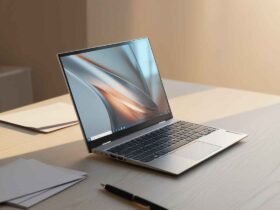


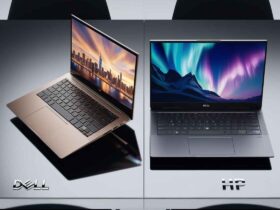




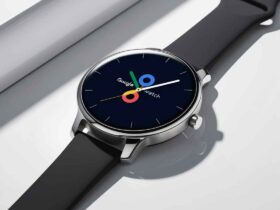
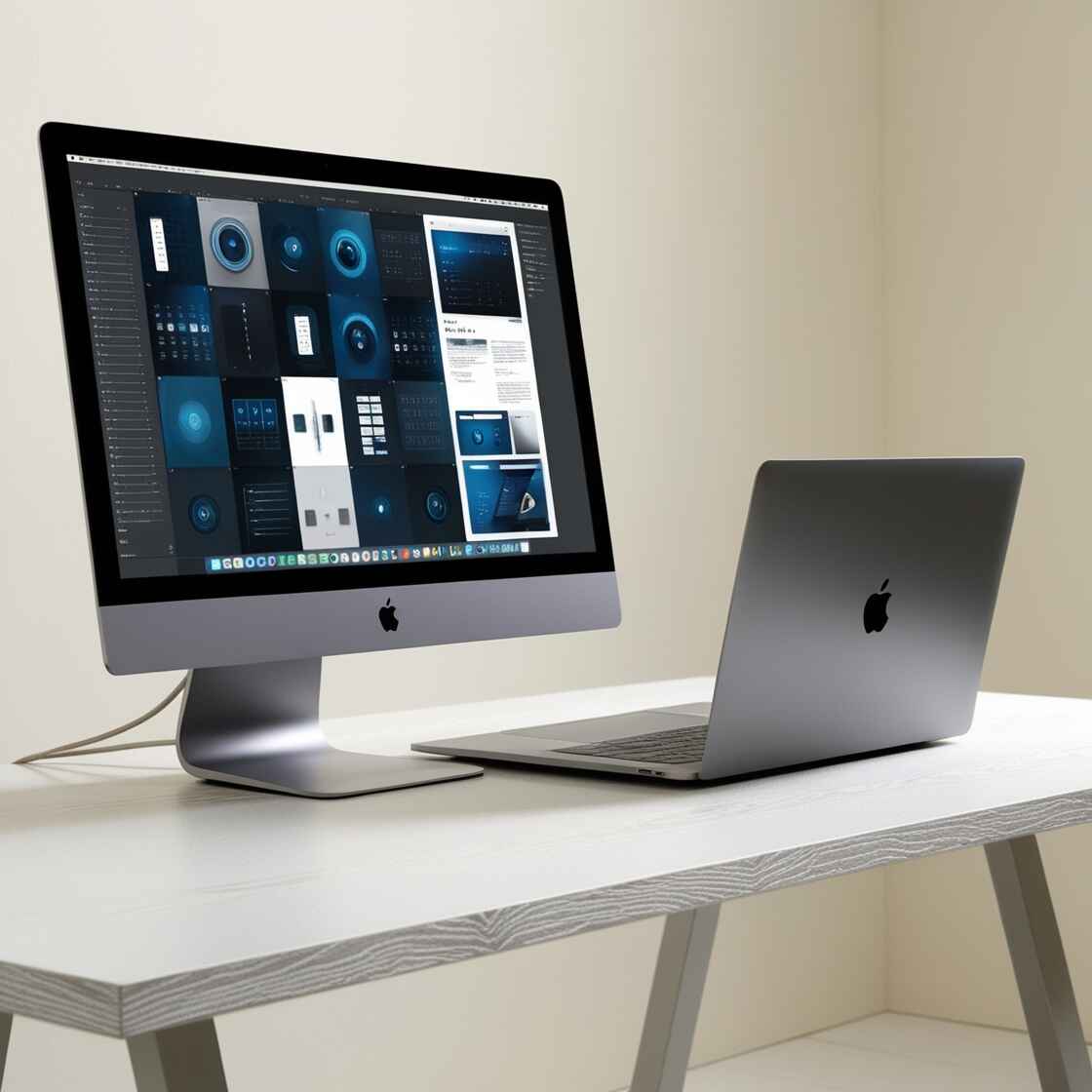

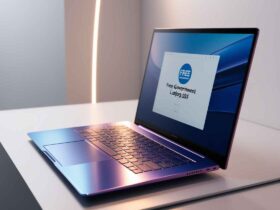
Leave a Reply